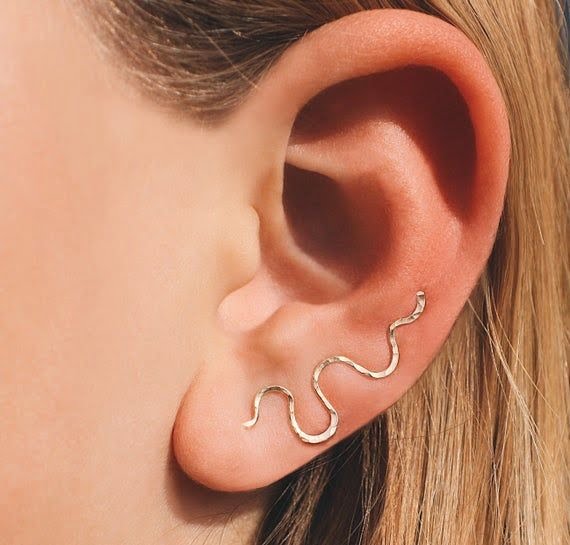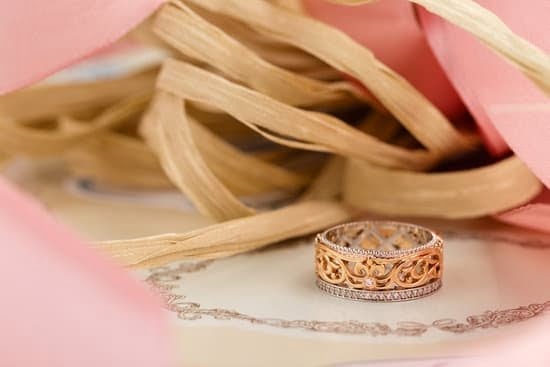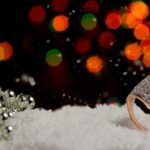Checking your jewelry for real diamonds is crucial for many reasons. Whether you’re purchasing a new piece or evaluating a cherished heirloom, knowing the authenticity of the diamond can make a significant difference in its value and sentimental worth. With various imitation stones flooding the market, it’s essential to equip yourself with simple yet effective methods to determine if your jewelry holds a genuine diamond.
Understanding the 4 Cs of Diamonds is key in determining authenticity. Carat, cut, color, and clarity play significant roles in assessing a diamond’s value and beauty.
This article will provide you with a comprehensive guide on visually inspecting diamonds for flaws, sparkle, and clarity using tools such as a loupe or magnifying glass. We will also explore other practical tests like the fog test, the newspaper test, and how utilizing specialized equipment like refractometers can aid in verifying the authenticity of your diamond.
Although some tests can be performed at home, seeking professional verification from certified gemologists should not be overlooked. They possess the expertise and knowledge required to give an accurate assessment of your diamond’s authenticity. Additionally, they can help you uncover valuable insights about your stone and provide proper documentation that guarantees its worth.
Knowing if your jewelry contains real diamonds brings peace of mind and ensures fair appraisal value when considering selling or insuring your precious pieces. As we delve into this article’s detailed sections on examining visual qualities, conducting easy DIY tests like the fog test or newspaper test, utilizing refractometers and thermal conductivity assessments, you will gain confidence in distinguishing between genuine diamonds and their imitations.
Proactively arming yourself with this knowledge enables you to make informed decisions about any future purchases while preserving family heirlooms’ legacy.
Stay tuned as we guide you through each step of checking your jewelry for real diamonds effectively and efficiently.
Understanding the 4 Cs of Diamonds
Understanding the 4 Cs of Diamonds: A Brief Overview
When it comes to determining the authenticity of a diamond, understanding the 4 Cs is essential. Carat, cut, color, and clarity are key factors that not only affect a diamond’s value but also play a significant role in identifying whether it is real or fake. Taking the time to learn about these characteristics can empower you as a consumer and enable you to make informed decisions when purchasing or evaluating jewelry.
Carat
Carat refers to the weight of a diamond and is often one of the first things people consider when assessing its value. One carat is equal to 200 milligrams, and diamonds are weighed using precise scales. However, carat weight alone does not determine a diamond’s authenticity. While larger diamonds may be more likely to be genuine, keep in mind that counterfeiters have become skilled at creating stones that mimic the size of real diamonds.
Cut
The cut of a diamond refers to its proportions and how well it has been faceted from its rough form. A well-cut diamond enhances its brilliance and sparkle when light enters and reflects within it. The way light interacts with a diamond can help distinguish between real and fake stones.
It is important to note that even genuine diamonds can vary in cut quality. However, certain cuts, such as the round brilliant cut, are known for maximizing brilliance, making them highly sought after.
Color
Diamonds range in color from completely colorless (D) to those with yellow or brown tints. Generally speaking, higher-quality diamonds have less coloration which makes them more valuable. However, some colored diamonds known as fancy-colored diamonds are highly valued for their intense hues ranging from yellow and pink to blue and green. When assessing genuineness based on color, keep in mind that fake diamonds may exhibit an artificial vibrancy or color consistency that is not present in natural diamonds.
Clarity
The clarity of a diamond refers to the presence or absence of internal flaws (inclusions) and external blemishes. These imperfections can affect both the appearance and authenticity of a diamond. The Gemological Institute of America (GIA) provides a grading scale for assessing clarity, ranging from Flawless (no inclusions or blemishes visible under 10x magnification) to Included (inclusions visible to the naked eye). While real diamonds can have some level of clarity characteristics, fake diamonds often lack these naturally occurring flaws.
Understanding the 4 Cs of diamonds can greatly aid in determining the authenticity of your jewelry. However, it is important to note that these factors should be considered together, rather than individually. A comprehensive evaluation using all four characteristics will provide a more accurate assessment. With this knowledge, you will be better equipped to identify genuine diamonds and protect yourself against imitation stones.
Visual Inspection
A crucial step in determining whether a piece of jewelry contains a real diamond is conducting a visual inspection. By closely examining the diamond for flaws, sparkle, and clarity, you can gain valuable insights into its authenticity. One helpful tool for this inspection is a loupe or magnifying glass, which allows you to observe the diamond’s characteristics up close.
To begin the visual inspection, make sure you are in a well-lit area where you can clearly see the diamond. Hold the jewelry piece at arm’s length and bring it closer to your eye level. Look for any visible flaws such as scratches, chips, or cloudiness within the stone. Keep in mind that real diamonds are not perfect and may have some imperfections known as inclusions.
Next, focus on the diamond’s sparkle and brilliance. A genuine diamond will reflect light in an exceptional way, creating a sparkling effect through its facets. Move the jewelry piece under different sources of light to see how it interacts with the diamond. Look for bright flashes of white light as well as colorful flashes of the rainbow (known as fire).
Clarity is another important characteristic to consider during a visual inspection. Real diamonds often have small internal characteristics that may be visible under magnification. Use a loupe or magnifying glass with at least 10x magnification to get a closer look at the diamond’s clarity features.
| Aspect | What to Look For |
|---|---|
| Flaws | Scratches, chips, cloudiness |
| Sparkle | Bright flashes of white light and colorful fire |
| Clarity | Internal characteristics visible under magnification |
Remember, a visual inspection is just one method to determine the authenticity of a diamond. It is always recommended to combine it with other tests for a more accurate assessment.
The Fog Test
The fog test method is a simple yet effective way to determine if a diamond is real or fake. This test takes advantage of the unique properties of diamonds that differentiate them from other materials. When you breathe on a diamond, the heat from your breath creates condensation on its surface. However, due to the high thermal conductivity of diamonds, the fog quickly dissipates, almost immediately clearing away.
To perform the fog test, follow these steps:
- Clean the diamond: Ensure that the diamond is clean and free from any dirt or oils that could affect the accuracy of the test.
- Hold the diamond: Gently hold the diamond between your fingers or with tweezers, making sure not to touch its surface directly to avoid leaving any residue.
- Breathe on it: Bring the diamond in close proximity to your mouth and exhale onto its surface. Try to cover as much of its area as possible.
- Observe: Watch how quickly the condensation clears away. If you notice that it dissipates almost instantly or within a couple of seconds, there’s a high probability that you have a real diamond in your hands.
The science behind this test lies in how diamonds conduct heat compared to other materials commonly used as diamond imitations. Diamonds have exceptional thermal conductivity, meaning they rapidly absorb and disperse heat. As a result, when you breathe on a real diamond, its ability to quickly dissipate heat causes fog to vanish almost instantaneously.
It’s important to note that while highly reliable for distinguishing between most common diamond imitations such as cubic zirconia or glass, this test may not be foolproof for detecting lab-grown diamonds since their thermal conductivity can sometimes be similar to natural ones. Therefore, if you suspect that your diamond might be lab-grown rather than natural, it’s recommended to consult with a professional gemologist for further verification.
The Newspaper Test
The newspaper test is a popular method used to determine the authenticity of a diamond by attempting to read text through it. This test relies on the unique optical properties of a real diamond that allow light to pass through without distortion. In contrast, a fake diamond or cubic zirconia will obstruct light and make it difficult or impossible to read text.
To perform the newspaper test, follow these steps:
- Select a newspaper or any printed material with small text.
- Place the diamond face-down on the printed text, ensuring that the table facet is in direct contact with the paper.
- Look through the pointed end of the diamond from above and try to read the text below.
If you can clearly see and read the text, it is an indication that you are holding a genuine diamond. However, if the text appears blurry or distorted, it suggests that the stone may not be a real diamond. Remember that this test should be done under good lighting conditions for accurate results.
While the newspaper test can provide some insight into determining a diamond’s authenticity, it is important to note that it is not foolproof and should only be used as one method among others outlined in this article. Factors such as poor print quality or unconventional cutting styles may affect the readability of text even with a real diamond.
Here are some additional tips and tricks for performing this test accurately:
- Use a magnifying glass or loupe to examine both sides of the diamond before conducting this test. Flaws such as bubbles, scratches, or chips may affect light transmission and make it difficult to read text even with a genuine diamond.
- Clean your diamond thoroughly before conducting this test to remove any dirt or substances that could obstruct light passage.
- If possible, compare your stone with another known genuine diamond using this test for better clarity in identifying differences.
- Be cautious when viewing extremely small diamonds since they may not allow enough light transmission for accurate results.
It is important to remember that while the newspaper test can give some indication of a diamond’s authenticity, it is always recommended to consult with a certified gemologist or jeweler for a professional verification. Their expertise and specialized instruments will provide the most accurate assessment of your diamond.
The Refraction Test
In addition to visual inspection and simple tests, another method to check if your jewelry contains a real diamond is through the use of a refractometer. A refractometer is a device that measures the refractive index of gemstones, which can provide valuable information about their authenticity. The refractive index refers to how light travels through a substance, and each gemstone has its own unique refractive index.
To conduct the refraction test, you will need a refractometer and your diamond jewelry. Follow these steps:
- Prepare the refractometer: Begin by calibrating the refractometer according to the manufacturer’s instructions. This involves setting it to zero with distilled water or other calibration liquids included with the device.
- Prepare the diamond: Clean your diamond thoroughly using mild soap and warm water. Ensure that there are no oils, dirt, or fingerprints on its surface as they can affect the accuracy of the test.
- Conducting the test: Gently place your diamond on the base of the refractometer, ensuring that it makes full contact with it. Adjust any necessary settings or knobs based on your specific refractometer model.
- Reading the results: Look through the eyepiece of the refractometer and locate the scale or digital display. The reading will indicate a number representing the diamond’s refractive index.
Real diamonds have a high refractive index between 2.417 – 2.419, depending on various factors such as impurities and temperature conditions during their formation process. It is essential to note that this range represents typical values but may slightly vary for individual diamonds due to variations in their composition.
It is important to compare your diamond’s reading against known ranges for real diamonds since other gemstones or diamond simulants will display different refractive index values. If your diamond’s reading falls within the expected range, it is likely to be authentic. However, if the reading deviates significantly from the anticipated range, it may indicate a different gemstone or a synthetic diamond simulant.
Remember that while the refractometer test is reliable, it should be used in conjunction with other methods and professional verification to ensure accurate results. Seeking assistance from certified gemologists will help provide an expert opinion on your diamond’s authenticity and give you peace of mind about your precious jewelry.
The Heat Test
The next method for checking the authenticity of a diamond is the heat test, which involves measuring its thermal conductivity. This test can help distinguish a real diamond from a fake diamond or cubic zirconia, as diamonds have excellent thermal conductivity. Conducting the heat test requires caution and the use of appropriate tools.
To perform the heat test, you will need a glass or metal container and a source of heat such as a lighter or matchstick. Start by ensuring that your diamond is clean and free from any other substances that may affect its thermal conductivity. Then, place the container on a stable surface and hold it with tweezers or tongs.
Next, heat up the container using the flame of the lighter or matchstick for about 30 seconds. Be careful not to overheat or damage your diamond during this process. After heating the container, quickly touch the diamond to its surface using the tweezers or tongs.
If the diamond is real, it will disperse heat quickly and remain cool to touch. On the other hand, if it’s a fake diamond or cubic zirconia, it won’t conduct heat effectively and may become warm or slightly hot.
It’s important to note that while this method can provide some indication of whether a diamond is real, it isn’t foolproof since other materials like moissanite also have high thermal conductivity. Therefore, it’s always advisable to use multiple tests in combination with professional verification from certified gemologists for an accurate assessment of your diamond’s authenticity.
Remember to exercise caution when performing any tests involving fire and seek professional assistance if you are unsure about conducting these tests on your own.
Professional Verification
While performing visual inspections and simple tests can provide some insight into the authenticity of a diamond, it is always recommended to seek professional verification from certified gemologists. These experts have the knowledge and specialized equipment to accurately determine whether a diamond is real or fake.
To find reputable gemologists, there are several tips that can be followed. Firstly, it is important to look for certifications and credentials. Reputable gemologists should have proper certification from recognized organizations such as the Gemological Institute of America (GIA) or the American Gem Society (AGS). These certifications ensure that the individual has undergone rigorous training and possesses the necessary expertise in diamond evaluation.
Another tip for finding reputable experts is to seek recommendations from trusted sources. Ask friends, family members, or jewelry professionals who they would recommend for professional verification services. Their personal experiences can give valuable insights into the reliability and credibility of different gemologists.
Additionally, conducting research online can be helpful in identifying reputable gemologists. Look for reviews, testimonials, and any relevant professional affiliations or memberships that indicate expertise and trustworthiness. It is also advisable to contact multiple gemologists and ask questions about their experience, qualifications, and testing procedures before making a final decision.
When seeking professional assistance for verifying a diamond’s authenticity, it is essential to choose a gemologist who operates independently from where the jewelry was purchased. This ensures unbiased evaluation without any conflicts of interest.
Additional Tips and Tricks
In addition to the various tests and methods mentioned earlier, there are several additional tips and tricks that can help you determine the authenticity of a diamond in your jewelry. These insights and advice provide further confidence in your assessment:
- Check for Certification and Hallmarks: When purchasing expensive jewelry-reviews/” target=”_blank” rel=”follow noopener”>jewelry, especially diamond pieces, it is essential to ensure they come with proper certification. Reputable grading laboratories such as GIA (Gemological Institute of America) or AGS (American Gem Society) can provide accurate assessments of a diamond’s quality.
Look for certifications like GIA certificates or laser inscriptions on the diamond itself. Additionally, some countries have specific hallmarks indicating the authenticity of certain metals or gemstones, so be sure to familiarize yourself with these marks. - Purchase from Reputable Sellers: To minimize the risk of purchasing fake diamonds, it is vital to buy from trusted sellers and jewelers with a solid reputation. Research different jewelers, read customer reviews, and ask for recommendations from friends or family members who have had positive experiences buying diamonds. Reputable sellers are more likely to accurately represent their products and provide reliable documentation.
- Importance of Proper Documentation: Keeping proper documentation for your diamond jewelry is crucial not only for ensuring its value but also for verification purposes in case you decide to resell it later on. Make sure you receive an invoice or sales receipt stating all relevant details about the diamond, including carat weight, color grade, clarity grade, cut grade (if applicable), and any other pertinent information.
This documentation acts as proof of authenticity and helps establish the value of your diamond in case of loss or theft.
By following these additional tips and tricks along with utilizing the various tests discussed earlier, you can enhance your ability to distinguish real diamonds from fakes effectively. Remember that while some methods may provide initial indications, seeking professional verification from certified gemologists is always recommended when dealing with valuable diamonds. With these tools and knowledge at hand, you can confidently determine the authenticity of your diamond jewelry, preserving its value and ensuring your peace of mind.
Conclusion
In conclusion, it is crucial to know if your jewelry has a real diamond in order to make informed decisions about its value and authenticity. By understanding the four Cs of diamonds – carat, cut, color, and clarity – you can have a better idea of what to look for when determining a diamond’s authenticity. Visual inspection is an important step in checking for flaws, sparkle, and clarity, and using a loupe or magnifying glass can aid in this process.
The fog test is a simple method that involves breathing on the diamond’s surface and observing how quickly the fog clears. This test takes advantage of the science behind the different thermal properties of diamonds compared to fake stones. Additionally, the newspaper test is useful in determining whether a diamond is genuine by attempting to read text through it. With some practice and attention to detail, readers can perform these tests accurately.
For more advanced verification methods, such as measuring the refractive index or conducting thermal conductivity tests, seeking professional assistance from certified gemologists is recommended. These experts have the knowledge and equipment necessary to provide accurate assessments. It is important to locate reputable professionals who can offer unbiased evaluations.
In addition to these outlined methods, there are other tips and tricks that can help in checking for real diamonds. Looking for certification and hallmarks can provide valuable information about a diamond’s authenticity and quality. Purchasing from reputable sellers ensures that you are obtaining genuine pieces of jewelry. Lastly, keeping proper documentation of your purchases will assist with future appraisals and valuations.
By utilizing the methods outlined in this article, you can confidently check your jewelry for real diamonds. Taking the time to inspect your jewelry thoroughly will not only ensure its authenticity but also give you peace of mind knowing that you own valuable pieces. Remember to consider all aspects – visual inspection, fog test, newspaper test, refractometer readings, thermal conductivity – before reaching a conclusion about your diamond’s authenticity.
Frequently Asked Questions
How can you test if a diamond is real at home?
Testing if a diamond is real at home involves a few simple methods, although it’s important to note these tests are not foolproof and may require some level of expertise. One common test is the fog test: by breathing on the diamond, you can observe how quickly the fog disappears. Real diamonds disperse heat rapidly and will clear up almost instantaneously, while fake diamonds retain the fog for a longer time due to their lower thermal conductivity.
Another method involves using a newspaper or a printed text; placing the diamond upside down on top of the text should blur the letters due to its high refractive index. Lastly, you can assess its hardness by scratching it against a piece of glass – diamonds are the hardest mineral, so they shouldn’t be scratched easily. However, it’s crucial to keep in mind that professional gemological testing is necessary for an accurate assessment.
How can you tell if jewelry is real or fake?
Determining whether jewelry is real or fake requires observation and examination of several factors. Firstly, look for any hallmarks or stamps on the jewelry which indicate its authenticity and purity of metal content. Genuine gold or silver jewelry will often have markings such as “14K” or “925.”
Additionally, checking for discoloration or fading over time can reveal if it’s fake as real metals tend to maintain their color and luster even with age. Assessing weight can also provide insights – genuine jewelry typically feels heavier due to its denser material compared to imitations made from cheaper metals. Finally, examine the overall craftsmanship; authentic pieces usually have more intricate detailing and higher-quality workmanship.
Is there an app that can tell if a diamond is real or fake?
Yes, there are apps available that claim to help identify whether a diamond is real or fake through various means like visual analysis or electrical conductivity tests using your smartphone’s sensors. However, it’s essential to approach these apps with caution since they may not be 100% reliable, especially when dealing with high-value diamonds where professional testing is necessary for accurate results.
Some of these apps utilize image recognition algorithms to analyze a diamond’s characteristics, while others attempt to measure the stone’s electrical conductivity through the phone’s sensors. While they may provide a preliminary indication, it is always wise to consult with a certified gemologist or use professional gemological testing equipment for a definitive assessment before making any significant purchases or decisions.

Welcome to my jewelry blog! My name is Sarah and I am the owner of this blog.
I love making jewelry and sharing my creations with others.
So whether you’re someone who loves wearing jewelry yourself or simply enjoys learning about it, be sure to check out my blog for insightful posts on everything related to this exciting topic!





